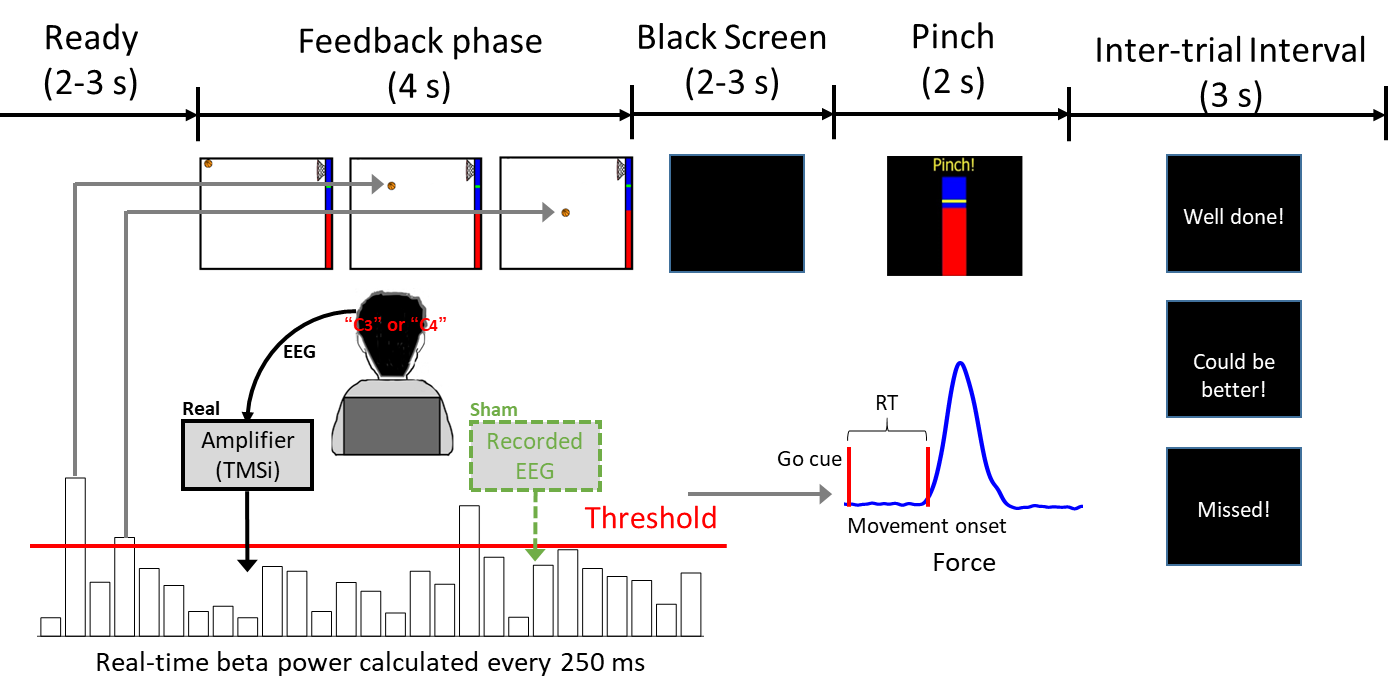Neurofeedback-Linked Suppression of Cortical β Bursts Speeds Up Movement Initiation in Healthy Motor Control: A Double-Blind Sham-Controlled Study.
Here, we show that healthy participants can be trained to self-suppress a special pattern of brain activity called ‘beta bursts’. We found that this training was accompanied by quicker reactions when prompted to move. The more beta bursts were suppressed, the less time needed to move. Our results suggest such training could be used to speed up movements when needed.
Abnormally increased β bursts in cortical-basal ganglia-thalamic circuits are associated with rigidity and bradykinesia in patients with Parkinson's disease. Increased β bursts detected in the motor cortex have also been associated with longer reaction times (RTs) in healthy participants. Here we further hypothesize that suppressing β bursts through neurofeedback training can improve motor performance in healthy subjects. We conducted a double-blind sham-controlled study on 20 human volunteers (10 females) using a sequential neurofeedback-behavior task with the neurofeedback reflecting the occurrence of β bursts over sensorimotor cortex quantified in real time. The results show that neurofeedback training helps healthy participants learn to volitionally suppress β bursts in the sensorimotor cortex, with training being accompanied by reduced RT in subsequent cued movements. These changes were only significant in the real feedback group but not in the sham group, confirming the effect of neurofeedback training over simple motor imagery. In addition, RTs correlated with the rate and accumulated duration of β bursts in the contralateral motor cortex before the go-cue, but not with averaged β power. The reduced RTs induced by neurofeedback training positively correlated with reduced β bursts across all tested hemispheres. These results strengthen the link between the occurrence of β bursts in the sensorimotor cortex before the go-cue and slowed movement initiation in healthy motor control. The results also highlight the potential benefit of neurofeedback training in facilitating voluntary suppression of β bursts to speed up movement initiation.
